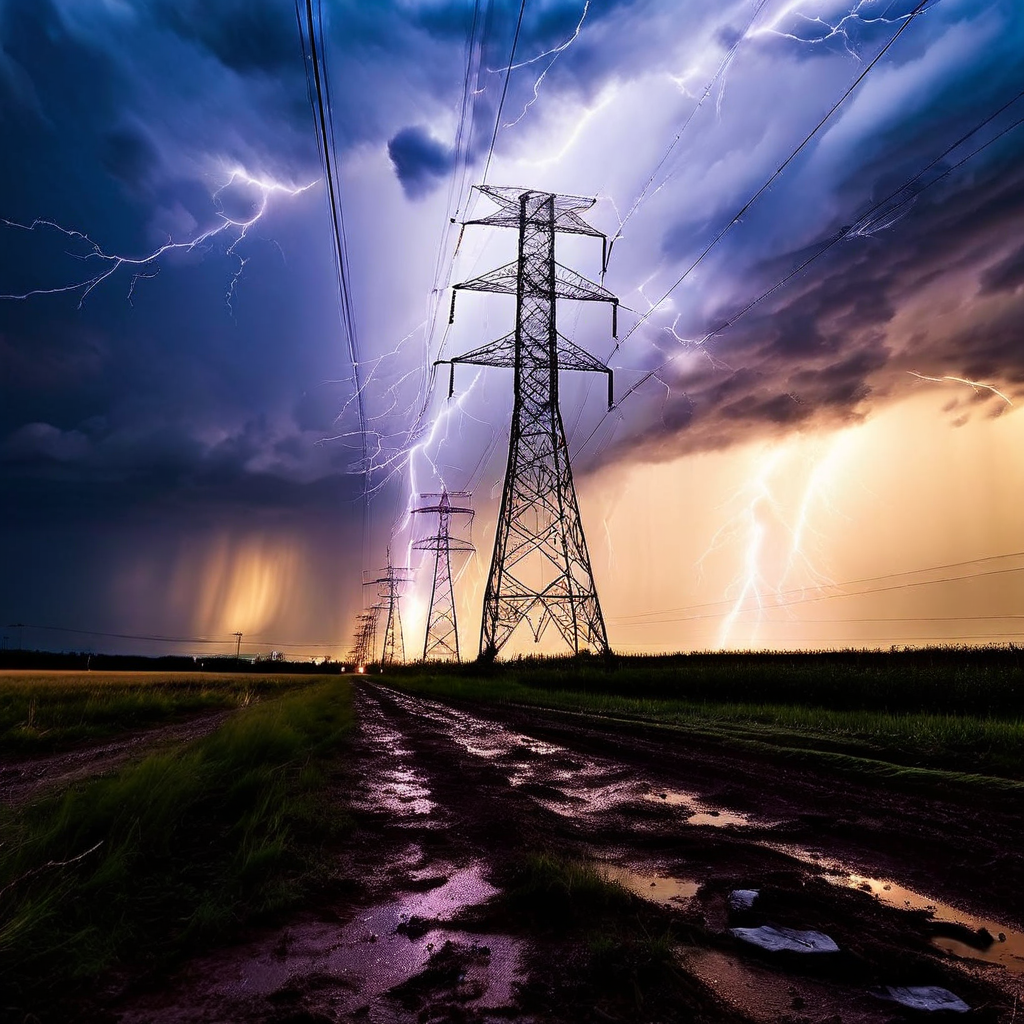Introduction to Lightning and Surge

Lightning, a powerful natural force, creates serious risks for electronic systems. Understanding lightning types and their impacts helps engineers develop effective protection strategies. This article explains the classification of lightning, associated hazards, and key preventive measures to protect electronic systems from lightning and surge damage.
Understanding Lightning Types and Their Impacts
Lightning generally falls into two main categories. Each category has unique characteristics and brings distinct risks for surges in electronic systems.
Direct Lightning
Direct lightning strikes objects on the ground with immense energy. This type of strike causes severe equipment damage and is the most dangerous source of surges.
Induced Lightning and Surge
Induced lightning does not involve a direct strike. Instead, it comes from the powerful electromagnetic fields generated by nearby lightning. These fields induce currents in conductors, leading to system interference and internal voltage surges.
Infiltration Paths of Lightning and Surge
Lightning and surge primarily enter electronic systems through distribution and signal lines. Without protection, these surges severely damage sensitive equipment.
(A) Distribution Line Surges
-
Electromagnetic Induction: Lightning striking buildings induces overvoltages. These voltages travel through distribution lines and damage connected devices. Installing SPDs reduces this risk.
-
Nearby Strikes: Even without a direct strike, nearby lightning creates strong electromagnetic fields. These fields induce overvoltages on distribution lines, making protective design essential.
-
Line Mutual Induction: Tightly bundled distribution lines within buildings can induce harmful currents in each other. Proper line spacing reduces inrush current risks.
(B) Signal Line Surges
-
Communication Line Induction: Signal lines are especially vulnerable to electromagnetic interference. Lightning-induced surges travel through these lines and disrupt communication equipment.
-
Greater Sensitivity of Signal Equipment: Although surges on signal lines are lower than on power lines, sensitive communication devices fail even with minor voltage spikes. Surge protection is critical for these systems.
Preventive Measures Against Lightning and Surge
Protecting electronic systems requires multiple layers of protection. The following preventive measures significantly reduce lightning and surge risks:
-
Install Surge Protection Devices (SPDs): Install SPDs at power and signal entry points to absorb voltage spikes and protect internal circuits.
-
Use Proper Wiring Layouts: Keep power and signal cables separate during wiring. This reduces electromagnetic coupling and minimizes surge impact.
-
Ensure Equipotential Bonding: Connect all metallic parts inside buildings to the same potential. This reduces voltage differences and limits surge damage.
-
Use Shielded Signal Cables: Shielded cables protect signal lines from induced voltages and electromagnetic interference.
-
Perform Regular Maintenance: Routine inspections and timely replacement of protection devices ensure continuous system safety.
Conclusion
Applying these strategies minimizes lightning and surge risks for electronic systems. By improving wiring, installing surge protectors, and maintaining grounding systems, operators can significantly increase system reliability and protect assets. A proactive protection plan ensures safer operation of modern electronic infrastructures under harsh lightning environments.
